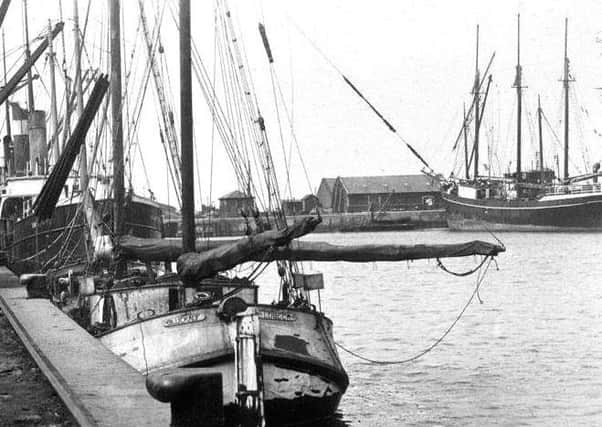The Bo'ness Sea Box '“ a sailor's insurance


If all went well the ship-masters could pocket large fortunes and the seamen earn good wages and sometimes a share of the profits. But there were many dangers lurking on the seas from unexpected storms which sank vessels and drowned the crews, to menacing pirates hell bent on sailing away with whatever they could grab. What could the owners do beyond arming the crew and saying their prayers?
The answer was insurance. If you wanted to protect your assets then you had to do-it-yourself and that is exactly what happened in Bo’ness.
Advertisement
Hide AdAdvertisement
Hide AdAt the time there were several examples of similar communities in different parts of Scotland solving the problem by creating what were called Sea Box Societies.
The Aberdeen version – possibly Scotland’s earliest was established in 1598 and Bo’ness followed in 1634. Over 120 members – owners, skippers and seamen – signed up so from the very first it was a body of great financial power and influence.
The sea box itself was just that, a wooden sea chest into which each member put in an agreed percentage of the value of the ship, its cargo or their wages, on the understanding that any future losses would be compensated from the box.
One of the chests belonging to the Bo’ness society has survived along with the earliest written records and it is in the excellent museum at Kinneil.
Advertisement
Hide AdAdvertisement
Hide AdIt has two keys to ensure that no individual could empty the box and that at least two ‘key masters’ were present whenever it was opened which was quarterly.
Over time the amount in the box increased to the point where the society was able to invest in all kinds of interest paying schemes like loans to other businesses or individuals including some of the poverty stricken gentry including the Duke of Hamilton himself.
It was a good time to be an investor because the growth of coal mining, salt making, potteries and iron works meant an increased demand for start up loans and high interest returns.
A growing population needed places to live and the Sea Box society built houses across the town for centuries: there is an early 20th century tenement in Corbiehall bearing the Sea Box plaque. An early map of the town from around 1760 shows land ownership dominated by the Duke of Hamilton but with a substantial area called ‘‘Sea Box Society’’.
Advertisement
Hide AdAdvertisement
Hide AdOf course it was not all about making money. There were many good causes supported by money from the box including education and religion.
The church in Corbiehall from 1638 (later the Star Cinema) was mostly paid for out of the box as was the minister’s stipend.
There was help for the poor especially if they had suffered from the effects of shipwreck or the actions of brigands.
Widows and orphans of lost sailors were given small pensions and there is a payment recorded in the Sea Box accounts from 1649 “to a distressed Seaman robbed by Irish Men of Warre” and in 1749 a payment “to William McPherson and two others whose tongues were cut out by the Turks of Algiers”.
Advertisement
Hide AdAdvertisement
Hide AdToday, well over 350 years after it was founded, the Sea Box Society continues its good work in the community long after the last vessel sailed from the harbour and missing tongues are a distant if painful memory.